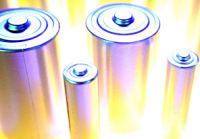

Research carried out by the Proceedings of the National Academy of Sciences (PNAS) has suggested that flexible paper batteries could meet the energy demands of the next generation of gadgets. A sample has been produced which is slightly larger than a postage stamp that can release about 2.3 volts, enough to illuminate a small light. The ambition is to produce reams of paper that could one day power a car.
The team behind the versatile paper, which stores energy like a conventional battery, says it can also double as a capacitor capable of releasing sudden energy bursts for high-power applications. While a conventional battery contains a number of separate components, the paper battery integrates all of the battery components in a single structure, making it more energy efficient. The battery contains carbon nanotubes, each around one millionth of a centimetre thick, which act as an electrode. The nanotubes are then embedded in a sheet of paper soaked in ionic liquid electrolytes, to conduct the electricity.
The flexible battery can function even if it is rolled up, folded or cut. Professor Linhardt of the Rensselaer Polytechnic Institute, commented that although the power output is modest, it could be increased easily. "If we stack 500 sheets together in a ream, that's 500 times the voltage. If we rip the paper in half we cut power by 50%. So we can control the power and voltage issue." However he went on to say that the world was not going to change as a result of this invention any time soon, with the new battery still being some way from the commercial market.